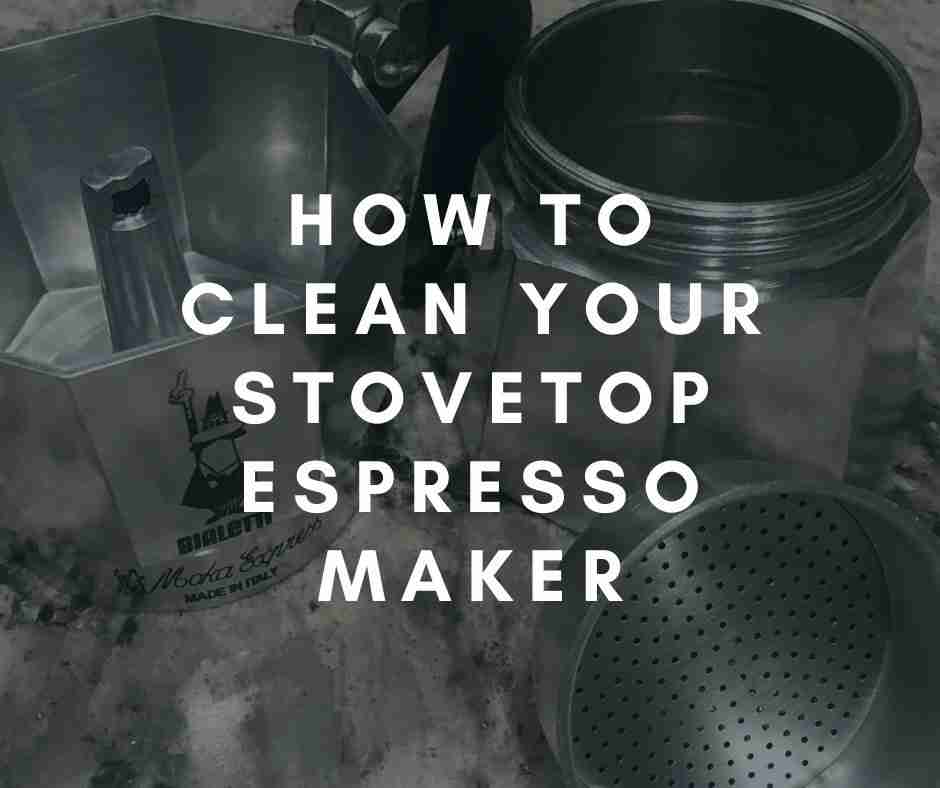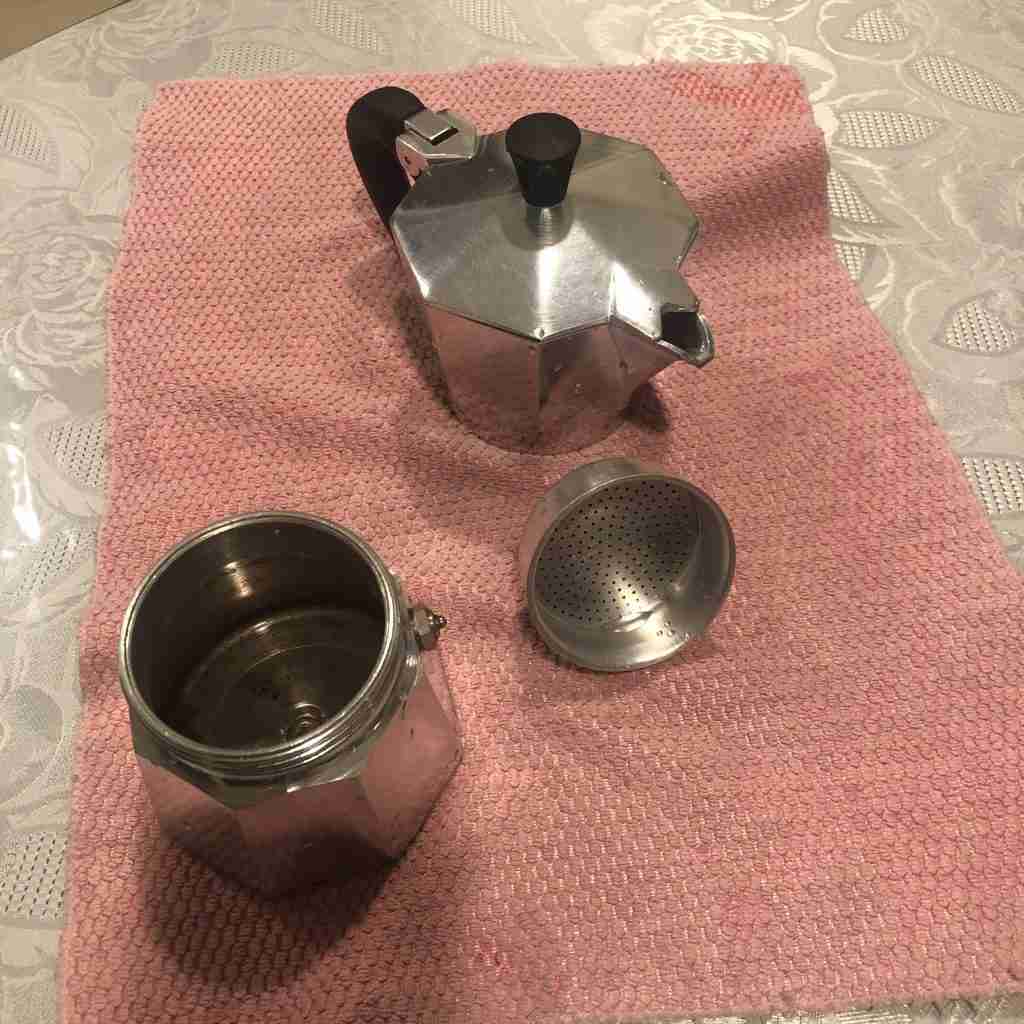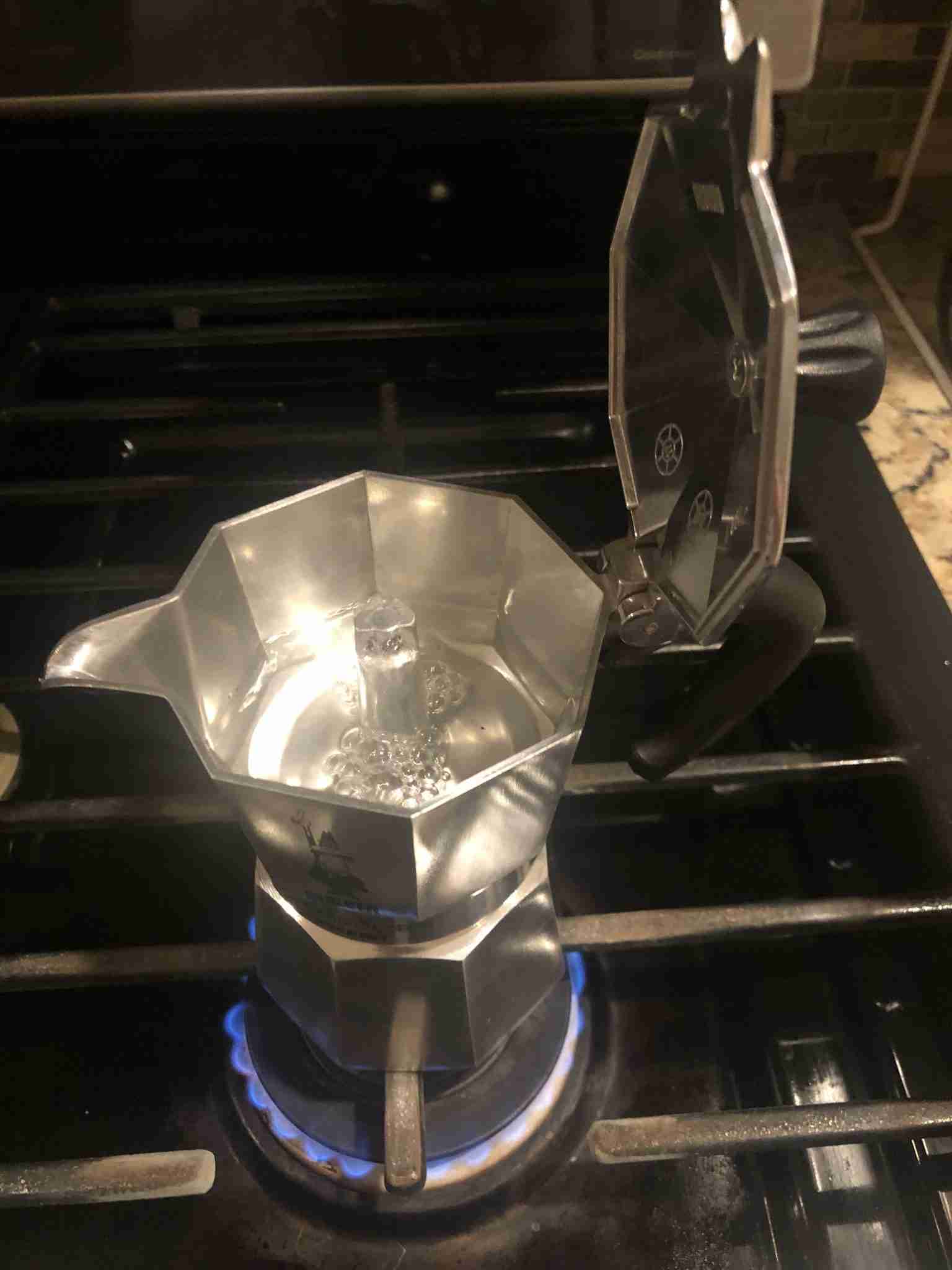
Cleaning your stovetop espresso maker or Moka pots requires little effort. These little pots are cheap and will last for many years. However, there is a misconception that they will not need to be cleaned. These stainless steel or aluminum pots will corrode if not cleaned regularly. If you allow water to sit in the unit they will also degrade. Make sure to keep these units dry, and never air dry them.
Coffee oils and particulates are left in your coffee maker after every time you brew and will oxidize and burn if you do not clean it. This burnt coffee taste will ruin any freshly brewed cup of coffee you try to make.
Cleaning before the first use
It is a good idea to baptize your stovetop espresso maker before you brew your first cup. Wash all the parts of your stainless steel or aluminum moka pot with hot water.
Then you should use any old beans to brew a cup of coffee and throw the coffee out. The coffee oils will seal the aluminum and prevent and metallic flavor from leeching into your coffee.
Regularly Cleaning your Moka Pot

It is 100% a good idea to clean your pot with soap after every brew. There is a rumor that the coffee oils leftover from your brew will enhance the flavor. Aluminum is a porous metal and will hold and coffee oils over time. However, there will always be a layer of aluminum oxide in the presence of oxygen and this will prevent corrosion and the lingering of any soapy taste. You must use soap to clean the surface of the metal to prevent any rancid old coffee oil leftover from previous batches.
Avoid and strong, commercial, or concentrated cleaning products. All you need is a simple dish soap to de-grease the coffee maker and get rid of left over coffee oils.
Disassemble your coffee maker and properly soap and clean all pieces of the stovetop espresso maker. Remove the gasket and clean underneath because coffee grounds and oils may be trapped underneath. Once cleaned and rinsed make sure you use a clean towel to hand dry each piece. When water is left on the surface of the metal it will cause corrosion over the long term.
Moka Pot Descaling / Limescale Removal
This will only apply to those to live in an area with hard water. This is when your water has high mineral content and as a result, may cause damage or blockage of your stovetop coffee maker. Most of the times the hard water is caused by limestone which deposits calcium and magnesium carbonates, bicarbonates and sulfates in the water when it percolates through the limestone.
The best solution to cleaning and descaling your moka pot is with vinegar. White vinegar works best because it cleans, disinfects, and removes any build ups of minerals naturally without leaving any chemicals or odors behind.
For the places you can reach with a towel rinse and wipe your coffee maker with vinegar. Afterwards, rinse it with water and wipe it again to dry.
To clean the inside the spout of the Moka pot you should use a mixture of 1 part vinegar to 2 parts water and brew like you normally would, but without any coffee grounds. Allow the mixture to boil and pass through the collection funnel and through the spout into the pot. Repeat this until you feel like your Moka pot has been thoroughly cleaned and descaled.
Cleaning a Burned Stovetop Espresso Maker
If you have left your coffee pot over the stove for too long or forgot about your coffee you may be left with burnt coffee inside the pot and a melted handle. To remove any burn coffee residue from your pot you will have to use vinegar again.
You must first soak your Moka pot in a mixture of 1 part vinegar to 2 parts water for 1 whole day. Afterward, rinse and scrub your stovetop espresso maker with a soft sponge or cloth. Do not use metal because it remove the layer of aluminum oxide on the surface of your pot. Once all the residue is removed you can use the vinegar mixture to clean the inside of the pot by boiling it.
Conclusion
Let us know if these steps worked and share it with any of your friends you think may burn their coffee! I hope you are left with a Clean Stovetop Espresso Maker.
Check out our guide on how I like to make my perfect cup of stovetop coffee!


After soaking a whole day, the residue on the outside of the pot did not come off. I hope the inside of the pot cleans up.
Please update me on whether it works! If it does or does not please attach some photos and I will try to help!
The rubber part that surrounds the filter… Does it need to be replaced periodically? How often? How should it be washed?
Hi Sofia,
As long as it is sealing correctly it will not need to be replaced. If you notice that there is water leaking out of the sides even when screwed on tightly you may want to look into getting a new rubber gasket. You should wash it regularly and make sure there are no coffee grounds stuck underneath the gasket.
Good luck!
Edmond
Thank you for this great information. My pot is stainless steel. is there anything I should be doing differently?
No these instructions should work for a stainless steel pot as well. If you want to try other mixtures you can search up different ways to descale stainless steel, but the cleaning methods should remain the same.
My husband insists that cleaning it is not great for the flavor..what is the consensus on this
It is a continuous myth perpetuated over and over again on moka pots. Clean it!